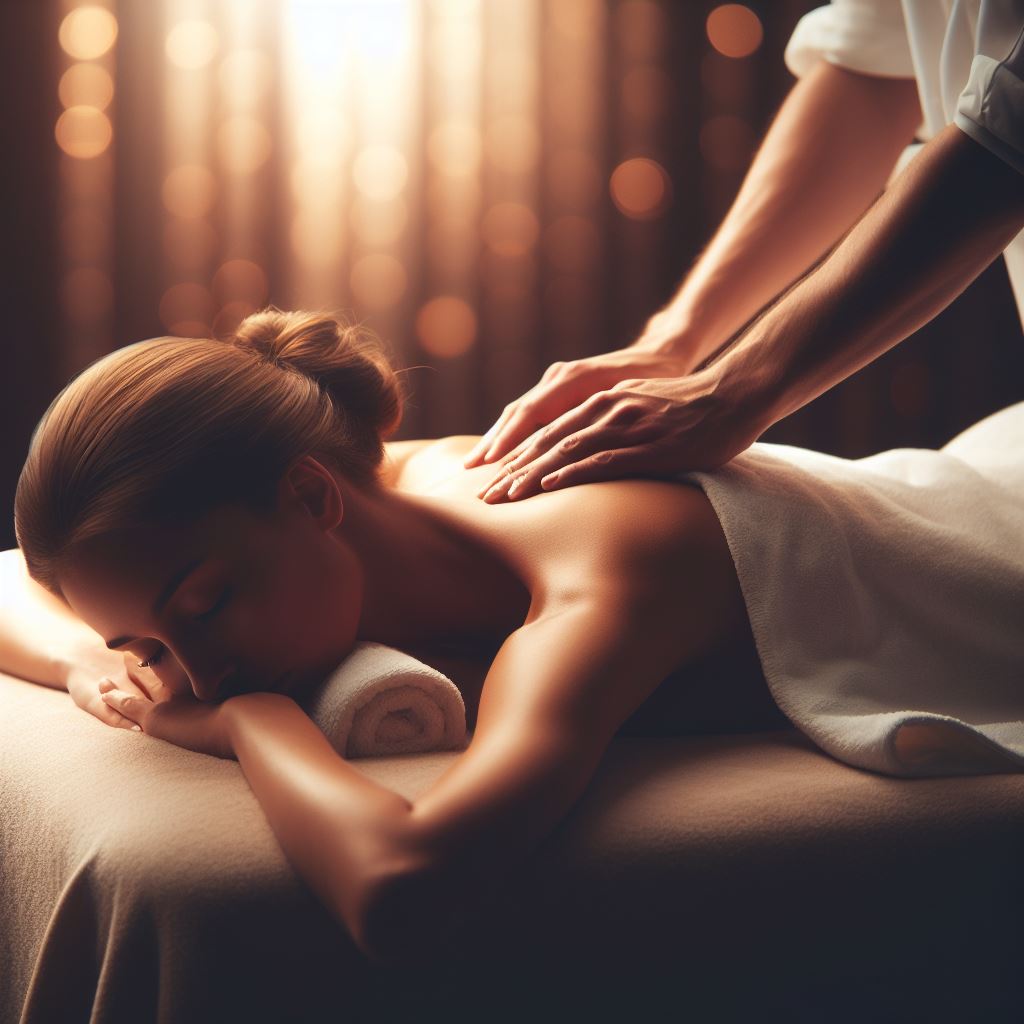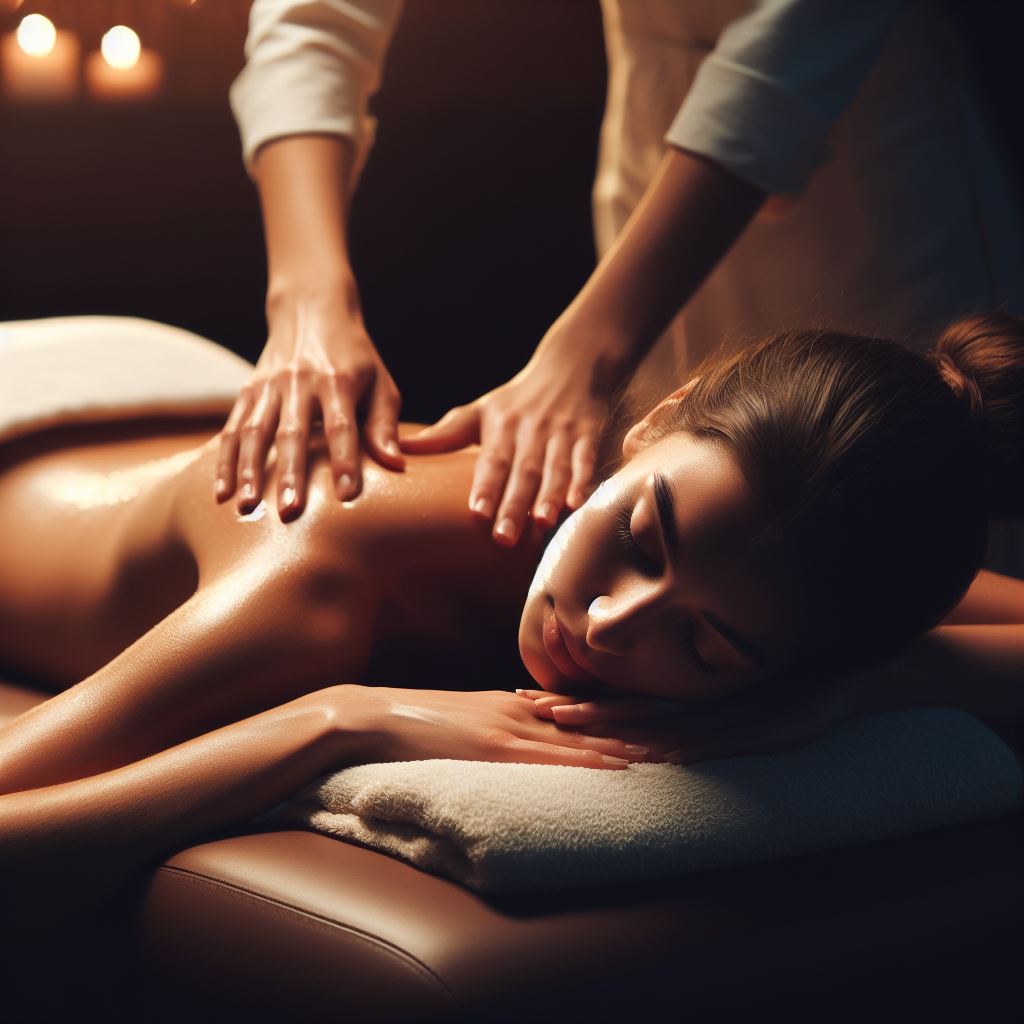Do you want to enhance your immunity and protect yourself from diseases and infections? If so, you might be interested in a natural and effective way to boost your immune system that does not involve pills or supplements.
In this post, we will show you how soothing massage techniques can improve your immunity by stimulating your blood and lymph flow, reducing your stress and pain, and enhancing your mental health. You will also learn about the types of massage that can benefit your immunity and how to choose a qualified massage therapist.
How Massage Impacts the Immune System

Massage is not only a relaxing and enjoyable experience, but also a powerful way to enhance your immunity. According to research, massage can influence the immune system in several ways:
- Massage increases the level of lymphocytes. Lymphocytes are the cells that help the immune system fight off harmful substances in the body, such as bacteria, viruses, and toxins. A study by Cedars-Sinai Medical Center found that after a 45-minute Swedish massage, the participants had a significant increase in the number of lymphocytes in their blood, compared to a control group that received light touch. Another study by the Touch Research Institute at the University of Miami School of Medicine showed that massage increased the level of natural killer cells, a type of lymphocyte that can destroy tumor cells and infected cells.
- Massage reduces the level of cortisol. Cortisol is a stress hormone that can suppress the immune system and increase inflammation. When we are stressed, our body produces more cortisol, which can lower our resistance to infections and diseases. Massage can help reduce the level of cortisol in the body, and thus improve the immune function. The Cedars-Sinai study found that after a massage, the participants had a significant decrease in the level of cortisol in their saliva. The Touch Research Institute study also found that massage reduced the level of cortisol in the urine.
- Massage decreases pain. Pain can also have negative effects on the immune system, as it can trigger the release of cortisol and other inflammatory substances. Massage can help relieve pain by stimulating the release of endorphins, the natural painkillers of the body. Massage can also reduce muscle tension, improve joint mobility, and increase blood flow to the affected areas. The Touch Research Institute study found that massage reduced pain and anxiety in patients with rheumatoid arthritis, a chronic inflammatory condition.
- Massage improves mental health. Mental health is closely linked to the immune system, as psychological factors can influence the immune response. Depression, anxiety, and loneliness can impair the immune function and increase the risk of illness. Massage can help improve mental health by promoting relaxation, enhancing mood, and reducing stress. Massage can also increase the level of oxytocin, a hormone that promotes social bonding and trust. The Cedars-Sinai study found that after a massage, the participants had a significant increase in the level of oxytocin in their blood. The Touch Research Institute study also found that massage improved mood and sleep quality in patients with fibromyalgia, a chronic pain syndrome.
As you can see, massage can have a positive impact on the immune system by affecting various physiological and psychological factors. By receiving regular massage therapy, you can boost your immunity and enjoy better health and well-being.
Types of Massage That Can Boost Your Immunity

There are many different types of massage therapy, each with its own techniques, benefits, and risks. However, some types of massage may be more suitable for boosting your immunity than others. Here are some of the best types of massage for immunity:
- Swedish massage. Swedish massage is one of the most popular and widely available types of massage therapy. It involves long, smooth strokes, kneading, and tapping motions that aim to relax the muscles, improve blood and lymph circulation, and reduce stress. Swedish massage can help to increase the level of lymphocytes, the cells that help the immune system fight off infections and diseases. It can also help to lower the level of cortisol, the stress hormone that can suppress the immune system. Swedish massage is suitable for most people, as it is gentle and relaxing. However, it may not be enough for those who have deeper muscle tension or chronic pain.
- Lymphatic drainage massage. Lymphatic drainage massage, also known as manual lymphatic drainage (MLD), is a specialized type of massage that focuses on stimulating the lymphatic system, which is responsible for filtering toxins and waste from the body. It involves light, rhythmic, and circular strokes that follow the direction of the lymph flow. Lymphatic drainage massage can help to reduce swelling, inflammation, and congestion in the tissues, as well as enhance the immune function. It can also help to prevent or treat lymphedema, a condition that causes fluid buildup in the limbs. Lymphatic drainage massage is especially beneficial for people who have compromised immune systems, such as those who have cancer, HIV, or chronic infections. However, it should be performed by a trained and certified therapist, as improper technique can cause harm or discomfort.
- Hot stone massage. Hot stone massage is a type of massage that combines Swedish massage with the use of smooth, heated stones that are placed on specific points of the body. The heat from the stones can help to relax the muscles, improve blood flow, and reduce pain. Hot stone massage can also help to boost the immune system by increasing the level of lymphocytes and reducing the level of cortisol. It can also help to improve mood, energy, and sleep quality. Hot stone massage is ideal for people who want a deeper and more soothing massage experience. However, it may not be suitable for those who have sensitive skin, diabetes, high blood pressure, or heart problems. It is also important to check the temperature of the stones before applying them to the skin, as they can cause burns or injuries if they are too hot.
How to Choose a Qualified and Experienced Massage Therapist
Massage therapy can have many benefits for your immunity and health, but only if it is performed by a qualified and experienced massage therapist. A bad massage can cause harm or discomfort, or even worsen your condition. Therefore, it is important to do some research and ask some questions before booking a massage session. Here are some tips on how to choose a good massage therapist:
- Check their credentials and training. A massage therapist should have a certification or license to practice massage therapy in your area. They should also have completed a recognized massage therapy program that covers the theory and practice of massage, anatomy, physiology, pathology, ethics, and business. You can check their credentials and training on their website, or ask them directly. You can also look for a massage therapist who is on an Accredited Register, such as the Complementary and Natural Healthcare Council (CNHC) in the UK, which means they have met certain standards of competence and professionalism.
- Ask for recommendations and reviews. A good way to find a reputable massage therapist is to ask for recommendations from your friends, family, or health care providers who have had positive experiences with massage therapy. You can also read online reviews from other clients who have used their services. However, keep in mind that reviews can be subjective and biased, so use them as a guide, not a guarantee.
- Choose a massage therapist who specializes in your needs. Different types of massage can have different effects on your immunity and health, so you should choose a massage therapist who specializes in the type of massage that suits your goals and preferences. For example, if you want to boost your immunity with lymphatic drainage massage, you should look for a massage therapist who has specific training and experience in this technique. You can also ask the massage therapist what types of massage they offer, and how they can help you with your specific needs.
- Communicate your expectations and preferences. Before and during the massage session, you should communicate your expectations and preferences to the massage therapist. You should tell them why you want a massage, what areas you want them to focus on, and what level of pressure you prefer. You should also inform them of any medical conditions, allergies, or injuries that you have, or any medications that you are taking. You should also give them feedback during the massage, and let them know if you feel any pain, discomfort, or dissatisfaction. A good massage therapist will listen to you and adjust their technique accordingly.
- Trust your intuition and comfort level. Finally, you should trust your intuition and comfort level when choosing a massage therapist. You should feel comfortable and safe with the massage therapist, and have a good rapport with them. You should also feel relaxed and satisfied after the massage session. If you feel uneasy, unhappy, or unsatisfied with the massage therapist, you should look for another one. Remember, you are the one who is paying for the service, and you deserve to have a positive and enjoyable massage experience.
How to Prepare for a Massage Session
Getting a massage can be a relaxing and enriching experience, but it also requires some preparation to make the most of it. Here are some things you should do before and during your massage session:
- Hydrate your body. Drinking plenty of water before and after your massage can help to flush out toxins and waste from your body, as well as prevent dehydration and headaches. Water can also help to lubricate your muscles and joints, making them more flexible and responsive to the massage. Aim to drink at least 8 glasses of water a day, and avoid alcohol, caffeine, and sugary drinks, as they can dehydrate you and interfere with your relaxation.
- Eat lightly. You should avoid eating a heavy meal right before your massage, as it can make you feel uncomfortable and bloated. It can also affect your blood pressure and digestion, which can interfere with the massage. However, you should not go to your massage on an empty stomach either, as you may feel dizzy or nauseous. Eat a light snack an hour or two before your massage, such as a fruit, a yogurt, or a granola bar.
- Dress comfortably. You should wear loose and comfortable clothing to your massage, as you will need to undress to your level of comfort for the massage. You can choose to keep your underwear on or take it off, depending on your preference and the type of massage you are getting. Your massage therapist will respect your privacy and cover you with a sheet or a towel, exposing only the area they are working on. You should also remove any jewelry, glasses, or contact lenses before your massage, as they can get in the way or cause discomfort.
- Practice relaxation techniques. You should try to relax your mind and body before your massage, as it can enhance the effects of the massage and make you more receptive to the therapist’s touch. You can practice some relaxation techniques, such as deep breathing, meditation, or listening to soothing music, to calm your nerves and reduce your stress. You can also use aromatherapy, such as lavender, chamomile, or rose, to create a relaxing atmosphere and mood.
- Communicate your needs and preferences. You should communicate your needs and preferences to your massage therapist before and during your massage, as it can help them to customize the massage to suit your goals and expectations. You should tell them why you want a massage, what areas you want them to focus on, and what level of pressure you prefer. You should also inform them of any medical conditions, allergies, or injuries that you have, or any medications that you are taking. You should also give them feedback during the massage, and let them know if you feel any pain, discomfort, or dissatisfaction. A good massage therapist will listen to you and adjust their technique accordingly.
- Enjoy the massage. The most important thing to do during your massage is to enjoy it. You should try to relax your muscles and let go of any tension or worries. You should also focus on your breathing and the sensations of the massage, and avoid talking or thinking too much. You should also avoid checking your phone, clock, or watch, as they can distract you from the massage. You should also respect the massage therapist’s time and boundaries, and avoid any inappropriate or sexual behavior. You should also tip your massage therapist if you are satisfied with their service, as it is a common courtesy and a sign of appreciation.
Conclusion
In this post, we have shown you how soothing massage techniques can enhance your immunity by stimulating your blood and lymph flow, reducing your stress and pain, and enhancing your mental health. You have also learned about the types of massage that can benefit your immunity, such as Swedish massage, lymphatic drainage massage, and hot stone massage. You have also received some tips on how to choose a qualified and experienced massage therapist, and how to prepare for a massage session.
Massage is not only a relaxing and enjoyable experience, but also a powerful way to improve your immune system and health. By receiving regular massage therapy, you can boost your immunity and protect yourself from diseases and infections. This is especially important during the winter or when you feel under the weather.
We hope you have found this post informative and helpful. If you have any questions or comments, please feel free to leave them below. We would love to hear from you and your experiences with massage and immunity. Thank you for reading and stay healthy!





















